Research and Development – ‘Bamboo and Natural dyes’- Mansi

The idea was to color the bamboo using the naturals dyes available in nature. There are various natural dyes available in the nature through which we can extract some beautiful colors. The effort of this research is to combine a sustainable material like bamboo along with another naturally available dye colors. The natural dyes used in here were turmeric powder, Alta, etc.
- Took 5ltrs of water in a vessel and added 50gms of turmeric powder to it

- Stirred the solution well.

- Boiled the solution for around 10mins and submerged the bamboo stick into it. Apparently I worked on with 3 different batches of bamboos, namely one peeled bamboo, one unpeeled and one split bamboo, to observe the best results of dying.


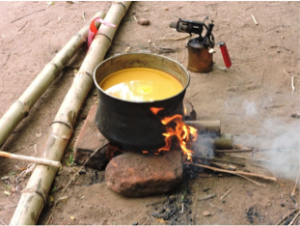
- Washed the samples with cold water after finishing the boiling process and cleaned them with damp cloth to remove the excess color on the surface.


- Samples looked so after the process.

First attempt: – boiled the bamboo for about 60mins in the solution.
Results: the samples got color but it did not penetrate deep into the skin of it. When cut the bamboo from one end, it we got the same old color of the bamboo.
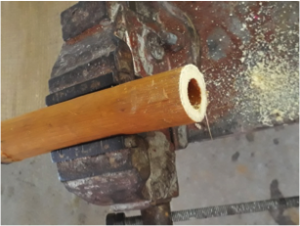


Second attempt: – submerged the bamboo for next 16 hours in the solution without providing heat, to realize how deep the color penetrates when submerged for long time.
Results: The skin of the bamboo got dyed but yet when cut the one side to see how deep it has penetrated, no color was found. Yet again the color dye was limited only till the skin and not deep inside.
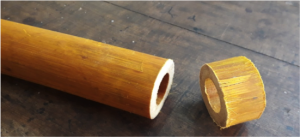


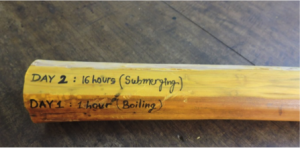

Third attempt: – Took a new piece of bamboo in this stage and submerged it for next 46 hours in the solution without providing heat, to realize and understand weather now the dye color penetrates deep into or not.
Results: After this process, I cut a piece to examine how deep the color penetrates, and with no surprise the color did not stain deep into the skin. It yet remained just only on the top layer of the bamboo.
Fourth attempt: – After following the submerging process first, now I stepped forward with boiling the same sample piece for around 70 minutes. (Doing the vice versa as boiled and then submerged the first sample.)
Results: It was found that boiling in the solution gives a deep, darker color stain as compared to submerging without heat. Also, the color is observed to remain till the top layer only is not penetrating deep inside even after submerging in the solution for longer hours.
Fifth attempt: – Took a new sample of peeled bamboo and boiled it in the solution of turmeric powder for around 3 hours.
Results: The results founded that the color had a deeper stain as compared to the one boiled for 1 hour but also on checking the penetration of it, the color remained limited up to some top layers only and did not go deep inside.
Sixth attempt: – The final attempt to get the color penetration deep into the skin of the bamboo even after so many failure attempts to it by submerging the sample pieces for one week.
Results: After this final testing it, the results we got were same as the above samples: the yellow color did not penetrate.
CONCLUSION and ANALYSIS– This dyeing process of bamboo with turmeric powder came to the co
nclusion that the bamboo will have a good yellow stain but will remain only on the top surface of the piece. Also the color fastness to light is little less since the bright yellow color turned to a dull shade of yellow when exposed out in sun.
Do not put the bamboo out in open space/ sun after dyeing it because then the moisture content that swept into the bamboo at the time of boiling(dying) will slowly come out and it will eventually lead to cracks in bamboo. It is advised to keep the dyed piece covered in a cotton cloth or a piece of clean paper after dyeing until all the amount of moisture is absorbed by the cloth/paper.
DAY 2– The project continued with dyeing the bamboo with ‘Alta’, a red color liquid that is used to put on hand while performing Indian classical dance.
- Took 5ltrs of water in a vessel and added 120ml of Alta liquid to it.

- Stirred the solution well and put it to boil

- Added 2 different samples of bamboo; namely one wet bamboo and one dry bamboo to test the color stain on each one of them and boiled for 140 minutes.

- Washed the samples with cold water after finishing the boiling process andcleaned them with damp cloth to remove the excess color on the surface.

- Samples looked so after the process.
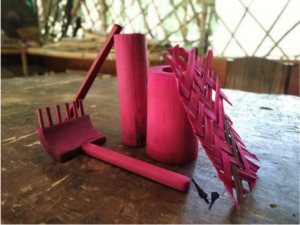
- The next step was to protect the bamboo from getting cracks. So instead of keeping them in open area/sun I kept the samples packed inside a cartoon box, so as the paper will absorb the moisture content in bamboo and cracks could be avoided.
CONCLUSION AND ANALYSIS– The results found that Alta gave a good magenta pink color stain on the bamboo but as with the previous case, it also did not penetrate deep into the bamboo skin. Also after the dying process, bamboos were kept covered into a cardboard box. It was observed that the wet bamboo sample had no cracks on it. But the dry bamboo got some hairline cracks on the surface. This tells us that cracks can be avoided after dying by keeping them in some covered area.
DAY 3- The next in line was to get blue shade bamboo. I tried dying bamboo with the product
called ‘UJALA’, a type of indigo liquid used in laundries for whitening the clothes during wash. The
Following process follows the steps of dying-
- Took 5 liters of water and added 150ml of Ujala liquid to it. Stirred the solution well



- Put the samples in the solution. I worked with one wet bamboo and similarly one dry solid bamboo. Boiled the solution for about 2hrs, covering the vessel with a ply board. Covering the vessel gives a deeper color stain in less time.

- After the boiling took it out and washed with cold water. The sample had a nice deep indigo stain and looked like so,


The samples were put into a closed cardboard box for around 5 days to make the bamboo completely dry and avoid cracks after it.
CONCLUSION AND ANALYSIS– The results found that Ujala gave a good deep indigo color stain on the bamboo but as with the previous case, it also did not penetrate deep into the bamboo skin. Also after the dying process, bamboos were kept covered into a cardboard box. It was observed that the wet bamboo sample had no cracks on it. But the dry bamboo got some hairline cracks on the surface. This tells us that cracks can be avoided after dying by keeping them in some covered area.
Experience– This project of dying the bamboo with natural dyes was very interesting and posses a huge potential that can be explored further. Bamboo as a material makes a great substance and when combined with colors and dyes can give great products. Thus it is a field that needs more work and exploration!
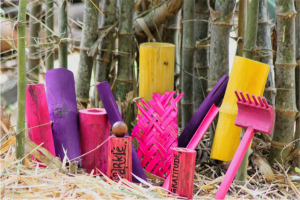

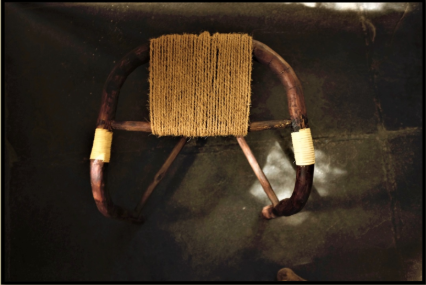
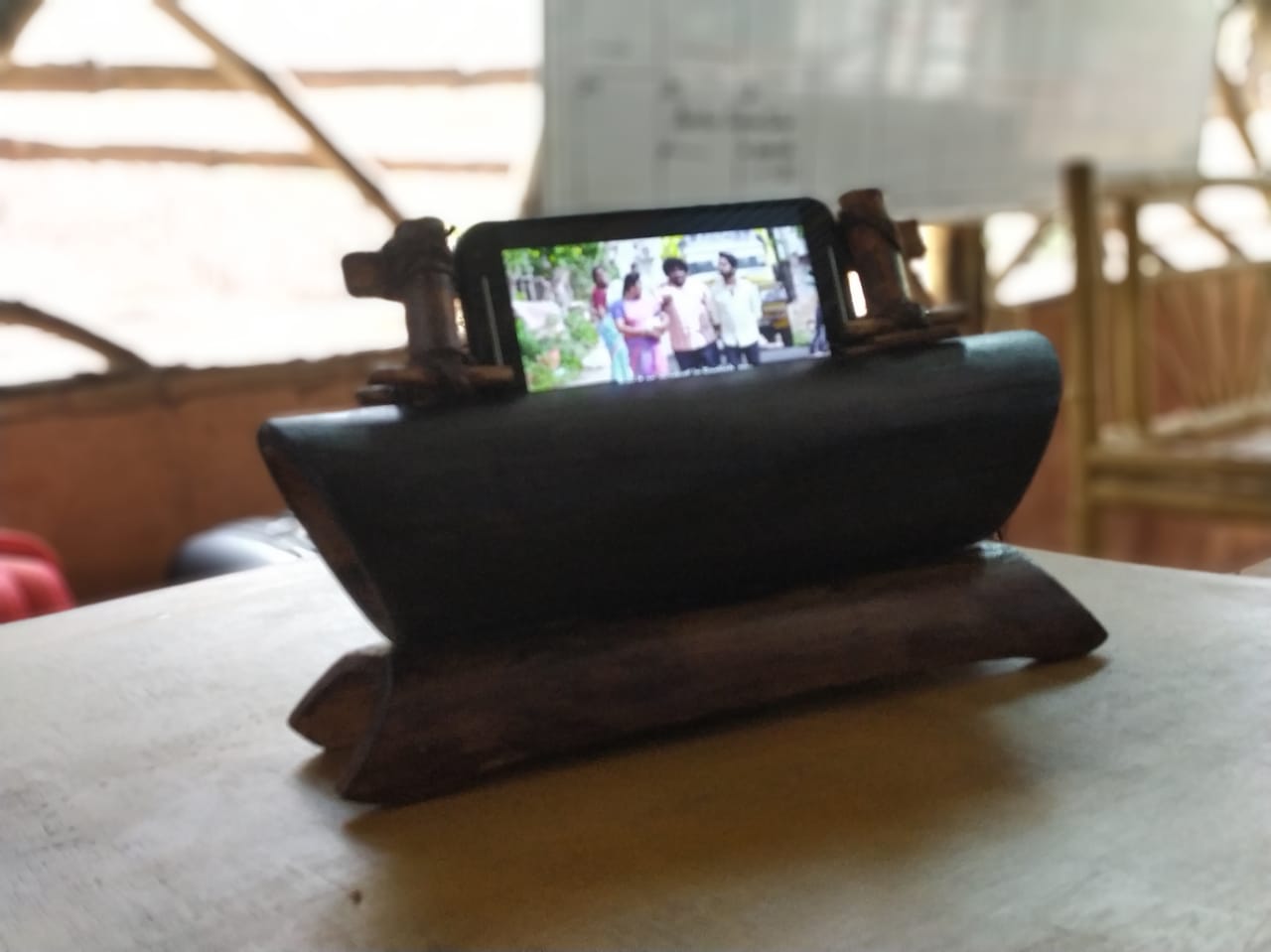
Leave a comment